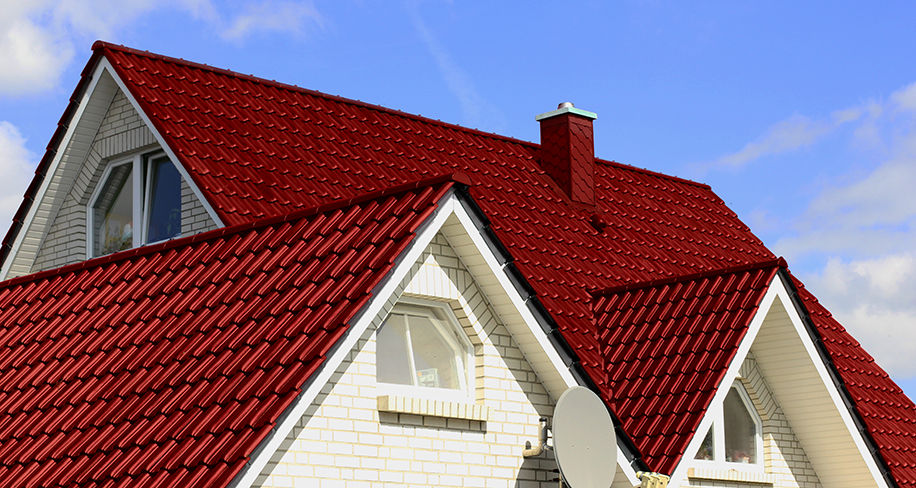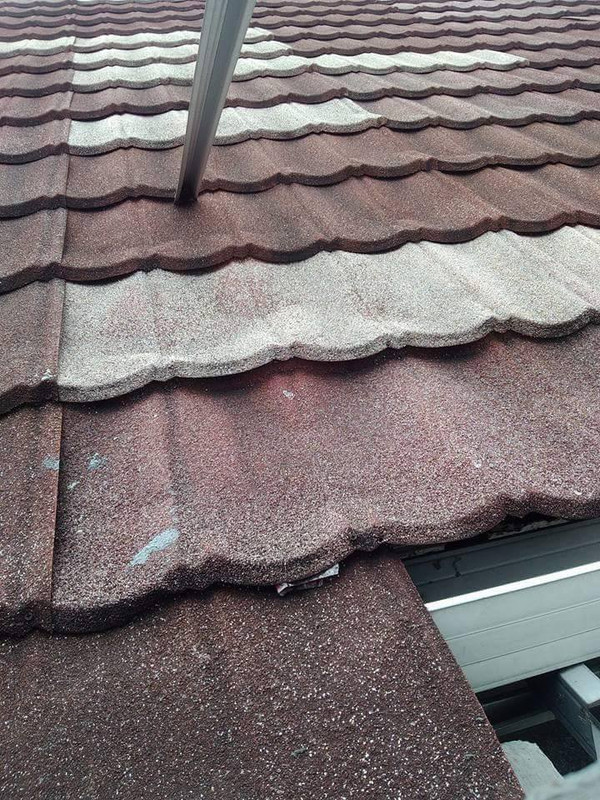Beranda > Artikel
Advantages and Disadvantages of Houses According t

In the process of building or renovating a house, choosing the right roof shape is not as simple as people generally think. The roof not only functions as an important part of the house and a protector for the contents of the house. The roof also plays an important role in displaying the appearance or architectural style of a house. In other words, the roof also plays a role in shaping and enhancing the visual image of our home. However, everything in this world has good and bad sides. So does the roof of the house. Before deciding what roof shape is most suitable for our tiny palace, it's a good idea to listen to the following explanation.
1. Flat roof
Advantages
With a flat roof shape, an open empty space is formed above the roof that can be transformed into a roof terrace for relaxing, or an area for growing plants in pots. Air conditioning (AC) devices or solar panels can be installed easily and do not endanger the safety of workers. Flat roof construction is easier to make than other types of roofs. In addition, the materials needed are also less so that it can reduce construction costs.
Disadvantages
The low degree of slope, or almost none, makes flat roofs prone to leaks. Therefore, flat roofs are less suitable for areas with high rainfall. Although flat roofs require less material, the costs incurred for maintenance or repairs can burden homeowners in the long run.
2. Gable roof
Advantages
Due to the sloping roof shape on both sides, both rain and snow can slide down without obstruction and water pooling on the roof can be avoided. The typical gable roof structure forms an empty space under the roof. This empty space can be used for an attic or bedroom. When viewed from the inside, the ceiling or ceiling looks high. High ceilings will help smooth air circulation, so that the air temperature inside the house feels cool at all times.
Disadvantages
Gable roofs are less suitable for houses that are often hit by strong winds or tornadoes. If the rafters and roof battens are not supported by strong trusses and purlins, the roof can collapse. Strong winds can blow off the roof tiles. Even very strong tornadoes can suck the roof off the walls entirely.
3. Gambrel roof
Advantages
Similar to a gable roof, the empty space under the roof can function as an attic, bedroom, or other room. The construction of a gambrel roof is arguably simple, because it only requires two main roof beams (frames) supported by other roof structure joints. The unique shape of the gambrel roof will make the house the center of attention.
Disadvantages
Like a gable roof, a gambrel roof is not suitable for areas that are often hit by storms. Likewise in areas with heavy snow in winter or heavy rain in the rainy season. The construction of a gambrel roof structure cannot be done carelessly, it must be careful, and waterproof at the ridge. Gambrel roofs require regular maintenance to prevent leaks.
4. Shield roof
Advantages
A shield roof is more stable than a gable roof. The reason is, the shield roof structure is equipped with an inside that is also sloping on all four sides. This is what makes the shield roof stronger and more durable. Shield roofs are suitable for areas that are often hit by strong winds or heavy rain. This roof also forms an empty space underneath that can be used for an attic or storage space.
Disadvantages
The cost of making a shield roof is more expensive than a gable roof. The design is also more complex and requires more materials.
5. Lean-to roof (skillion roof)
Advantages
A lean-to roof is a type of roof that is easy to build. Compared to other types of roofs, a lean-to roof requires less material. Both rainwater and snow can slide smoothly on its sloping surface, making this roof suitable for residences in snowy or high-rainfall areas. Lean-to roofs can also be applied for the purpose of increasing architectural and aesthetic appeal.
Disadvantages
If the roof slope is too high, the ceiling of the house can be too low. Lean-to roofs are also not suitable for areas that often experience strong winds.
6. Mansard roof
Advantages
A mansard roof allows homeowners to add rooms on the second floor as needed. When designing and building a house, the owner simply makes a house with a simple mansard roof. Then when funds are sufficient or there are new family members, small rooms with windows on the roof can be built. Its beautiful shape makes a mansard-roofed house the center of attention.
Disadvantages
A mansard roof is not an ideal choice for a residence in a snowy area. Due to the details it has, a mansard roof requires more costs. Making a mansard roof also requires special skills that are rarely possessed by construction workers in Indonesia.
What is the shape of the roof of the house that is applied
 Bahasa Indonesia
Bahasa Indonesia  Inggris
Inggris
 Bahasa Indonesia
Bahasa Indonesia  Inggris
Inggris
 Bahasa Indonesia
Bahasa Indonesia  Inggris
Inggris
 In the process of building or renovating a house, choosing the right roof shape is not as simple as people generally think. The roof not only functions as an important part of the house and a protector for the contents of the house. The roof also plays an important role in displaying the appearance or architectural style of a house. In other words, the roof also plays a role in shaping and enhancing the visual image of our home. However, everything in this world has good and bad sides. So does the roof of the house. Before deciding what roof shape is most suitable for our tiny palace, it's a good idea to listen to the following explanation.
In the process of building or renovating a house, choosing the right roof shape is not as simple as people generally think. The roof not only functions as an important part of the house and a protector for the contents of the house. The roof also plays an important role in displaying the appearance or architectural style of a house. In other words, the roof also plays a role in shaping and enhancing the visual image of our home. However, everything in this world has good and bad sides. So does the roof of the house. Before deciding what roof shape is most suitable for our tiny palace, it's a good idea to listen to the following explanation.



